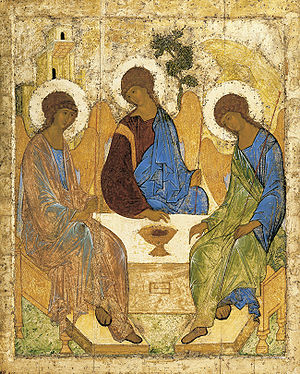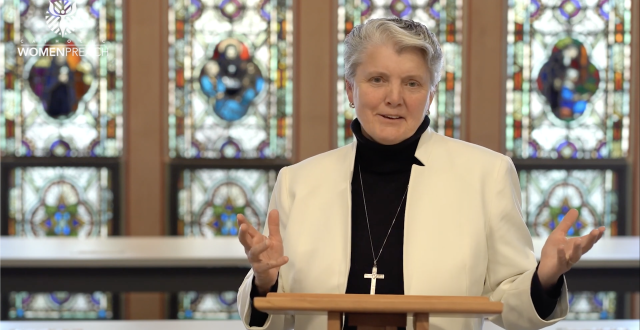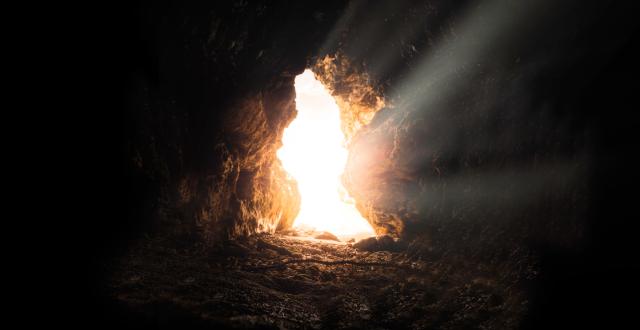Week 08 (May 10-16)
By Katie Roeck, Associate

Christian icons offer us that opportunity to contemplate what is before us.
The icon is a sign of the presence of God. What people worship is not the wood and colors but what it represents as it travels a path from the visible to the invisible, the material to the spiritual.
Icons are not meant to be just a feast for the eyes. They force us not to look but to gaze beyond this world and into the next, they call us to see with the eyes of faith. Icons are an opening to God.
The Trinity (pictured above) by Andrei Rubliof (Rublev) in 1420 is considered by many to be the greatest of all icons. This icon depicts the three angles, in the guise of men, visiting Abraham and his wife Sarah at the Oak of Mamre (Genesis 18:1-15). The scriptures refer to the three angles in the singular, “The Lord appeared to Abraham,” but the event is seen by the Church tradition as a symbolic representation of the Trinity.
Abraham and Sarah have offered hospitality, which is also an image of the Eucharistic offering of bread and wine. The placement of the angles creates a circle, the foundation of the composition, to represent the oneness in the essence of the Divine Persons. The placement of the figures causes the viewers eyes to move from person to person, rather than dwell within the limited space. The unity of the figures is further symbolized by their wearing of blue garments, but they are made distinct by each having a uniquely colored over garment. In the center of the table is a receptacle containing the head of a calf that was slain by Abraham to provide food for the guests. This is symbolic of Christ’s sacrifice at the crucifixion and also symbolic of the Eucharist.
As you gaze upon the icon, allow yourself to look beyond what you see, allow the visible to lead you to the invisible, the material to lead you to the spiritual.



